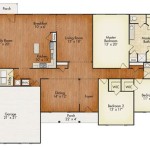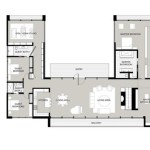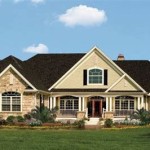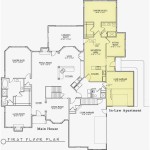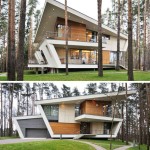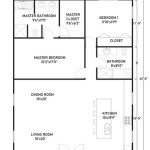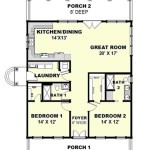House Plans From The 1920s: A Window into Architectural History
The 1920s, often referred to as the Roaring Twenties, was a period of significant social, economic, and cultural transformation. This era also witnessed a distinct evolution in residential architecture, reflected in readily available house plans. Examining house plans from this decade provides invaluable insights into the lifestyles, technological advancements, and aesthetic preferences of the time. These plans are not merely blueprints; they are historical documents that showcase the aspirations and realities of middle-class homeowners nearly a century ago.
The availability of house plans in the 1920s was driven by several factors. Post-World War I economic growth fueled a housing boom. Furthermore, the rise of mail-order catalogs and popular magazines made pre-designed house plans accessible to a broader audience. Companies like Sears, Roebuck and Co. offered entire house kits, complete with all necessary materials, which could be shipped directly to the building site. This democratization of home design allowed many families to realize the dream of homeownership, contributing to the suburban expansion that characterized the decade.
These plans offered a variety of styles, reflecting the diverse architectural influences of the time. Common styles included the Craftsman bungalow, the American Foursquare, the Tudor Revival, and the Colonial Revival. Each style possessed distinct characteristics, catering to different tastes and geographical locations. By studying these house plans, individuals can understand the nuances of these architectural styles and appreciate the craftsmanship and design principles that defined the era.
Key Features of 1920s House Plans
Several key features distinguish house plans from the 1920s. These features were driven by both aesthetic preferences and practical considerations, such as advancements in building technology and changing social norms.
One prominent characteristic was the emphasis on efficient space utilization. While homes were generally smaller than those built in later decades, designers focused on maximizing livable area through careful planning of room layouts. Living rooms were often centrally located, serving as the heart of the home. Dining rooms were typically separate from the living room, reflecting the importance of formal dining at the time. Kitchens, while compact, were designed for efficiency, often featuring built-in cabinets and work surfaces.
Another notable feature was the prevalence of natural light. Large windows were incorporated into the design to illuminate interior spaces. Transom windows above doors allowed for ventilation and further enhanced the flow of natural light throughout the house. The orientation of the house on the building lot was also carefully considered to maximize sunlight exposure.
The use of built-in features was also common. Built-in bookcases, china cabinets, and window seats added character and functionality to the homes. These features were not only aesthetically pleasing but also provided practical storage solutions, helping to declutter living spaces. The integration of these built-ins reflects a commitment to craftsmanship and attention to detail that was characteristic of the era.
Popular Architectural Styles Reflected in 1920s House Plans
The 1920s witnessed the popularity of several distinct architectural styles, each with its unique characteristics and design principles. Understanding these styles is crucial for interpreting and appreciating house plans from this era.
The Craftsman Bungalow remained a popular choice, characterized by its low-pitched roof, wide overhanging eaves, exposed rafters, and prominent front porch. These homes often featured natural materials, such as wood and stone, and emphasized handcrafted details. The bungalows were typically one or one-and-a-half stories tall, making them an affordable and accessible option for many families.
The American Foursquare, also known as the Prairie Box, was another common style. These homes were characterized by their boxy shape, two-and-a-half stories, and hip roof. They often featured a central dormer and a large front porch. The American Foursquare offered ample living space within a compact footprint, making it a practical choice for urban and suburban lots.
The Tudor Revival style gained popularity as well, drawing inspiration from medieval English architecture. These homes were characterized by their steeply pitched roofs, decorative half-timbering, and prominent chimneys. Tudor Revival homes often featured arched doorways, leaded glass windows, and ornate detailing, creating a sense of old-world charm.
The Colonial Revival style continued to be a popular choice, reflecting a renewed interest in American history and tradition. These homes were characterized by their symmetrical facades, classical detailing, and formal floor plans. Colonial Revival homes often featured a central entrance, evenly spaced windows, and decorative cornices, evoking the elegance and sophistication of earlier American architecture.
Technological Advancements and Their Impact on House Plans
Technological advancements played a significant role in shaping house plans of the 1920s. New materials, construction techniques, and household appliances influenced the design and functionality of homes.
The widespread availability of electricity had a profound impact on home design. Electric lighting replaced gas lamps, allowing for brighter and more efficient illumination. Electrical outlets were incorporated into the design, enabling the use of various appliances, such as radios, vacuum cleaners, and washing machines. The electrification of homes transformed the way people lived, making household chores easier and enhancing leisure activities.
Advances in plumbing technology also influenced house plans. Indoor plumbing became increasingly common, with bathrooms featuring flush toilets, bathtubs, and sinks. Kitchens were equipped with running water and sinks, making food preparation and cleanup more convenient. The improved sanitation and hygiene provided by indoor plumbing contributed to a higher standard of living.
The development of central heating systems further enhanced the comfort and livability of homes. Coal-fired furnaces provided consistent and efficient heating throughout the house. Radiators were placed in each room to distribute heat evenly. Central heating eliminated the need for individual stoves and fireplaces, making homes cleaner and more comfortable during the colder months.
The increasing use of automobiles also impacted house plans. Garages became an integral part of the design, either attached to the side of the house or detached in the backyard. Driveways were incorporated into the landscaping, providing access to the garage. The automobile transformed transportation and influenced the layout of suburban neighborhoods.
In summary, house plans from the 1920s offer a rich tapestry of architectural styles, design principles, and technological innovations. Exploring these plans provides a valuable glimpse into the past, revealing the aspirations and realities of homeowners during a transformative era in American history. The influence of these designs can still be seen in many homes today, making the study of 1920s house plans relevant and rewarding for anyone interested in architecture, history, or home design.

1920s House Plans By The Ew Stillwell Co Small Economical Bungalow Cottage No L 112

74 Beautiful Vintage Home Designs Floor Plans From The 1920s Americana

74 Beautiful Vintage Home Designs Floor Plans From The 1920s Americana

A Collection Of 36 Floor Plans And Hand Coloured Elevations South N House Styles The Period Around 1920s Architecture

74 Beautiful Vintage Home Designs Floor Plans From The 1920s Americana

74 Beautiful Vintage Home Designs Floor Plans From The 1920s Americana

48 American 1920s Color House Plans Designs With Front Elevation And Floor Pages Printable Scrapbooking Instant Israel

Content In A Cottage 1920s Six Room Colonial Floor Plans

House Floor Plans 1910s 1930s Technical Drawing

1920s House Plans By The E W Stillwell Co Side Gable Bungalow No L 148

